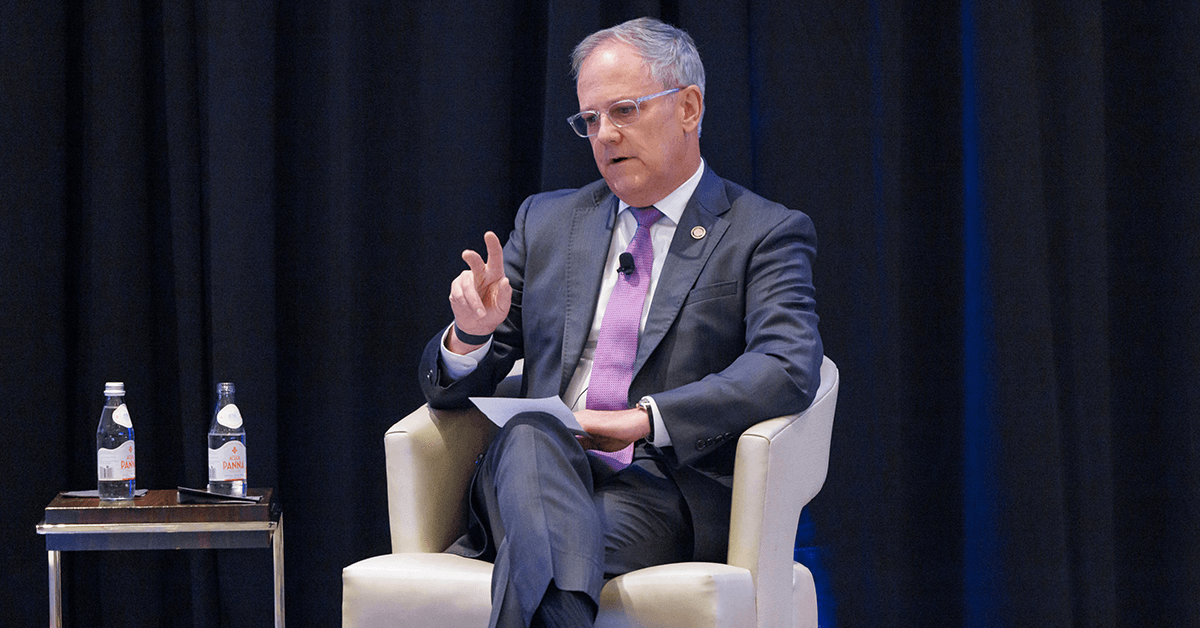Former Deputy Secretary of Defense Robert Work approached Michael Stewart, director of the U.S. Navy’s Disruptive Capabilities Office, and asked if, given all of the rhetoric around artificial intelligence and unmanned systems, the service branch is actually making real use of the technologies and “doing something with it.” Until a few years ago, Stewart admits he himself wasn’t sure. But Russia’s ongoing invasion of Ukraine, among other examples, has shown Stewart and the world how important these emerging technologies are to warfighting now.
Stewart shared some of his findings at the Potomac Officers Club’s 2024 Navy Summit on Thursday. He said AI is quite good at sorting data and indicating what information should be prioritized. He also said it’s succeeding at target recognition and that a combination of manned and unmanned systems will be a good way to supplement stagnating fleet size in the years to come.
Building up attritable mass, rather than “some huge exquisite system,” is the name of the game, Stewart told the audience of government contractors.
Potomac Officers Club events are the preferred spaces for the GovCon community to gather, network and share ideas. AI will be a subject of discussion at the next big POC event: the 2024 Intel Summit. Reserve a spot now at this Sept. 19 symposium that takes a close look at the Intelligence Community through a GovCon lens.
Inside the Disruptive Capabilities Office
The DCO, which Stewart leads, builds on his work with the Unmanned Task Force and focuses on the acceleration of a host of budding tech, not just autonomous systems. It’s primarily focused on speed — “speed matters, innovation matters,” Stewart highlighted multiple times during his fireside chat with Ericsson North America’s Dr. Sheryl Genco.

“[The DCO is] really meant to go very, very quickly, look at the aperture beyond sustaining technology and current technology, and see if there’s anything out there,” Stewart explained. “I think our tasking is: make sure that we don’t get caught flat footed by disruptive technology and make sure we can leverage it to the extent we can.”
Innovating quickly is something Stewart said Ukraine has done to an impressive and surprising degree during the war. On the other hand, speed is a concerning aspect of China’s activities in recent years. As one of the top rivals of the U.S., China is “coming at twice the speed and half the cost” in terms of technological advancements and industrial development. He said from a defense perspective, the U.S. hasn’t been disrupted since 1945. His mission at the DCO is to discover and advise the Navy on what it needs to equip itself in these times of instability and rapid changes.
“I don’t think there’s a dearth of technology out there. I think we’re kind of awash in technology…our challenge is to get access to that technology…I think we all recognize there seems to be a problem. We’ve got to go faster,” Stewart said.
So far, the DCO’s model, which hinges on getting funding from Congress—Stewart was clear he isn’t the one “writing checks”—is working, he suggested. “For small dollars, we find something…we sort of swarm on something, on a very complex problem and get a little bit of seed funding and do a prototype…And once you’ve proven in an operational setting, the funding comes.”
















